Forced marriages remain a grim reality in Pakistan, where deep-rooted traditions and socio-economic factors perpetuate the practice despite legal prohibitions. While international conventions and local laws aim to safeguard individual rights, countless women and children continue to suffer under a system that prioritizes cultural customs over personal autonomy. Let’s delve into the pervasive issue of forced marriages in Pakistan, examining its causes, consequences, and the urgent need for systemic reform.
The Scope of Forced Marriages
Forced marriages have been under widespread speculation due to the severe human rights violations they pose. While global awareness and education have led to a gradual decrease in such practices, they remain a pressing issue, particularly in Pakistan. Customs like watta satta (exchange marriage), badal-e-sulh (marriage as a means of settling disputes), and wani (marriage as compensation) are deeply entrenched in the country’s cultural fabric, perpetuating forced marriages.
Child Marriages: A Subset of Forced Marriages
Child marriages are a significant subset of forced marriages, primarily because children lack the psychological maturity to make life-altering decisions. The United Nations Convention on the Rights of the Child (UNCRC) defines a child as “every human being below the age of eighteen years.” In Pakistan, 18% of females and 5% of males are married off by the age of 18 (UNICEF, 2021). Although legislative measures like the Child Marriage Restraint Act of 1929 and the Prevention of Anti-Women Practices Act of 2011 aim to address this issue, implementation remains a challenge.
The consequences of child marriages are severe. According to the World Health Organization (WHO), complications from pregnancy and childbirth are the leading causes of death among girls aged 15 to 19 globally. Early pregnancies also pose heightened risks of diseases like puerperal endometritis and systemic infections. Beyond physical harm, child marriages cause psychological damage, as children’s cognitive development continues into their early twenties.
Pediatrician Kishwar Enam stated that while a child’s physical growth may be complete by late adolescence, cognitive development, abstract thinking, and mature reasoning continue evolving until around 24-25 years, when the frontal lobes fully mature. Marrying a child before their cognitive and emotional development is complete can lead to serious consequences, including psychological distress, physical health risks from early pregnancy, and limited educational or career opportunities. Additionally, it can result in social isolation, domestic violence, and an inability to make mature decisions, all of which perpetuate cycles of poverty and gender inequality.
Forced Conversion and Minority Women
In Pakistan, marriage is often used as a tool by extremist elements to justify the forced conversion of minority women. Legal and social loopholes exacerbate this issue, leaving victims and their families with little recourse. Factors such as religious sympathies, patronage among lawmakers, lack of checks on religious institutions, and the misrepresentation of minorities in mainstream media enable perpetrators to act with impunity.
Cultural Practices Perpetuating Forced Marriages
Forced marriages are particularly prevalent in rural areas of Sindh and Khyber Pakhtunkhwa. Fear of daughters eloping and societal disdain for the right to free consent in marriage, seen as a “Western” concept, drive these practices. In many cases, cultural norms and traditions take precedence over fundamental human rights, perpetuating women’s oppression.
Prohibition of Inter-Tribal Marriages
Inter-tribal marriages are often prohibited, paving the way for forced unions in the name of honor. This practice extends beyond Pakistan’s borders; for instance, 49% of forced marriage cases in the UK originated from the Pakistani community in 2023. Despite international recognition and relevant legislation, the tradition persists both domestically and among diaspora communities.
Consanguineous Marriages
Limited interaction between genders and the stigma surrounding inter-caste or inter-tribal marriages often result in consanguineous unions. A study conducted in Malakand, Khyber Pakhtunkhwa, found that 66.4% of marriages were consanguineous. Such practices promote cultural expectations to marry within the family, and often without consent or freedom to select a partner.
Child Marriages: A Persistent Crisis
Child marriages remain a dominant form of forced marriage in Pakistan. According to UNICEF, 22% of Pakistanis are married before the age of 18. Girls, in particular, bear the brunt of this practice. In rural areas like southern Punjab, cultural practices such as wani and watta satta compel parents to marry off their daughters at a young age. For instance, 14-year-old Salma Bibi from Dera Ghazi Khan was married to a 76-year-old man. Daughters are often seen as economic burdens, leading families to prioritize early marriages.
This issue transcends religious boundaries, affecting both Muslim and non-Muslim minorities. One high-profile case was that of Arzoo, a 13-year-old Christian girl who was kidnapped, forcibly converted to Islam, and married to a man thrice her age. Despite legal provisions like the Punjab Child Marriage Restraint Act of 2015, enforcement remains inadequate.
Legislative Efforts and Their Challenges
Legislation addressing forced marriages has seen incremental progress. The Criminal Law (Amendment) Act of 2004 criminalized the practice of marrying off women as compensation for crimes. The Prevention of Anti-Women Practices Act of 2011 further outlawed forced marriages and prescribed penalties of imprisonment and fines for violators. Additionally, the Child Marriage Restraint (Amendment) Bill of 2018, advocated by Sherry Rehman, raised the minimum marriage age for girls from 16 to 18.
While these legislative advancements are commendable, implementation remains the primary challenge. Pakistan’s deeply rooted cultural norms often override formal laws. Victims seeking justice face societal backlash, including family estrangement, abuse, and, in extreme cases, honor killings. For instance, the stigma surrounding divorce deters many women from escaping forced marriages.
The Role of Poverty and Education
Poverty is a significant driver of forced marriages in Pakistan. Human rights activist Qamar Naseem highlighted that girls in tribal and rural areas are often “sold” into marriage, with families receiving significant sums from wealthy men seeking young brides. Similarly, children’s rights activist Haviba Salman noted that girls in Chitral are frequently married off for as much as 2.5 million Pakistani Rupees.
A lack of education further compounds the issue. Many victims are unaware of their rights and the legal remedies available to them. Widespread awareness campaigns are crucial to educate communities about the consequences of forced marriages and the protections afforded by law.
Moving Forward: Implementation and Advocacy
The simple passing of laws is insufficient to address the deep-seated issue of forced marriages. Effective implementation requires a multi-faceted approach:
- Strengthening Law Enforcement: Ensuring that police and judiciary act impartially and swiftly in cases of forced marriages.
- Raising Awareness: Launching education campaigns to inform communities about the rights of individuals and the consequences of forced marriages.
- Empowering Women: Providing women with access to education, financial independence, and support networks to resist coercion.
- Engaging Religious Leaders: Working with clergy to reinterpret cultural and religious practices that perpetuate forced marriages.
- International Collaboration: Partnering with global organizations to adopt best practices and monitor progress.
Forced marriages represent a fundamental violation of human rights and a significant societal challenge in Pakistan. Despite legislative progress, cultural norms and economic factors continue to perpetuate this practice. A comprehensive approach involving legal enforcement, education, and advocacy is essential to eradicate forced marriages and uphold the dignity and autonomy of every individual. Only then can Pakistan move closer to fulfilling its commitments to human rights and gender equality.



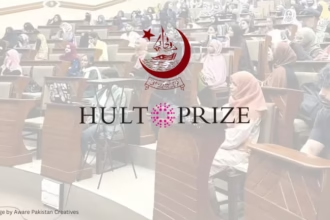
Forced marriages rob girls in Pakistan of their freedom and future, forcing them into roles they never chose. It’s disheartening to see this practice continue, undermining the basic rights and opportunities that every girl deserves. Empowering education and professional development are key to breaking this cycle. We must continue to speak out against forced marriages and support pathways that offer genuine choice and opportunity for every girl.